
Dr. Armin Kargol (Physics) and Dr. Kimberlee Mix (Biological Sciences) have received a $112k grant from the LA Board of Regents Support Fund Enhancement Program for the acquisition of two instruments, the Port-a-Patch (a compact patch clamp system to study electrical properties of cells) and the Nucleofector (a computerized device for cell transfections). Both instruments will be used in collaborative research and in courses taught by Dr. Kargol and Dr. Mix.
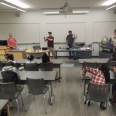
Students at the physics department at Loyola are among the most active on campus in terms of their involvement with research, commitment and participation in various outreach programs mainly aimed at energizing school kids towards science. They also participate in on-campus events such as the President's open house and the Monroe Rededication Ceremony. The Loyola physics students fully deserved their recognition as a "distinguished" chapter by the National Student Physics Society.

Michael Kammer (Physics'12) has received a Master's degree in Biomedical Engineering from Vanderbilt University. His thesis title is "Characterizing Aptamer-Small Molecule Interactions with Backscattering interferometry". He is also a co-author of two articles recently published in The Analyst and in PNAS Plus.
The Drs. Rachel and Stephen Kent Research Endowment for Science and Mathematics and Rev. John H. Mullahy, S.J., Research Endowment for the Sciences were established to support collaborative research by faculty and students. This year out of six grants, three were awarded to Physics students.
My-Hanh Truong ("Structural Optimization of Amorphous Graphene" - advisor Dr. K. Schaefer), Andrew Eddins (“Innovative Physics Demonstrations for Student Outreach and Instructional Use” - advisor Dr. A. Kargol), and Richard Bustos (“Innovators at work – Projects for the Electronics Club” - advisor Dr. A. Kargol) all receive grants to support their research and educational projects.
As part of activities marking the centennial of the publication of Albert Einstein’s groundbreaking work in General Relativity, the American Physical Society has put together a short list of the landmark papers published in APS journals these past one hundred years. Among the works authored by celebrated physicists such as Einstein himself, Stephen Hawking, Robert Oppenheimer, Roger Penrose etc. is a paper by our own Carl Brans (coauthored with Robert Dicke).
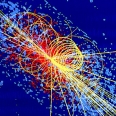
String theory is widely believed to be the best candidate for a unified theory of all the four fundamental forces in nature. Recently, Dr. Biswas along with his collaborator, Dr. Okada, from University of Alabama investigated whether a particular "stringy" feature, "nonlocality", can be detected at the LHC (Large Hadron Collider) run that is currently underway. LHC is the world’s largest and most powerful particle accelerator consisting of a 27-kilometre ring of superconducting magnets with a number of accelerating structures to boost the energy of the particles along the way.
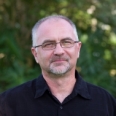
Dr. Armin Kargol received the College of Humanities and Natural Sciences Faculty Excellence in Teaching Award at the May 2015 HNS Honors Convocation.
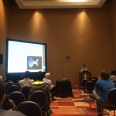
Loyola Physics students, Richard Bustos, Riley Mayes and Thomas Slack, recently participated and presented in the annual April Meeting organized by the American Physical Society (APS), the umbrella physics organization in the country. Both Riley Mayes and Thomas Slack were selected to present talks in the research panels along with world renowned physicists across the globe, a rare achievement for undergraduate students. Richard Bustos made a poster presentation.
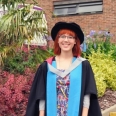
Emily Drabek-Maunder (Physics ’09) received her Ph.D. in Astrophysics from the University of Exeter, UK, in the summer of 2014. Her thesis was entitled: A Submillimetre Study of Nearby Star Formation using Molecular Line Data. She is currently a postdoctoral research associate at Imperial College London, where she is studying star formation and evolution in our Galaxy. Her research often takes her to the Mauna Kea Observatory in Hawaii.
Students at the physics department at Loyola are among the most active on campus in terms of their involvement with research, commitment and participation in various outreach programs mainly aimed at energizing school kids towards science, but also on-campus events such as Nano-days and President's day. Thus it's nice to note that Loyola was recognized as a "distinguished" chapter by the Student Physics Society.
